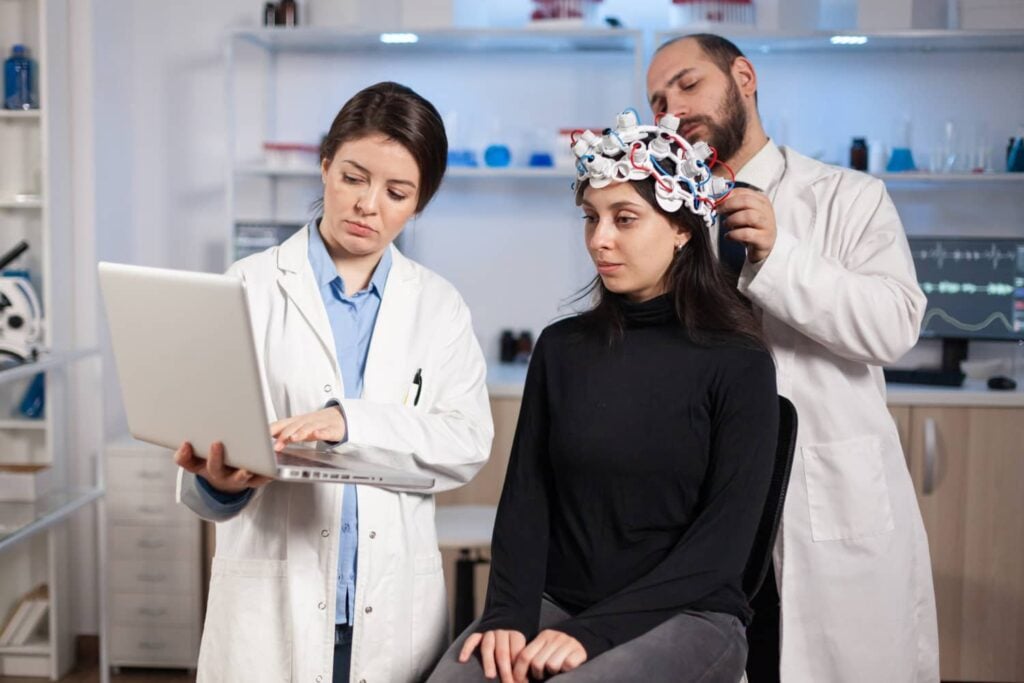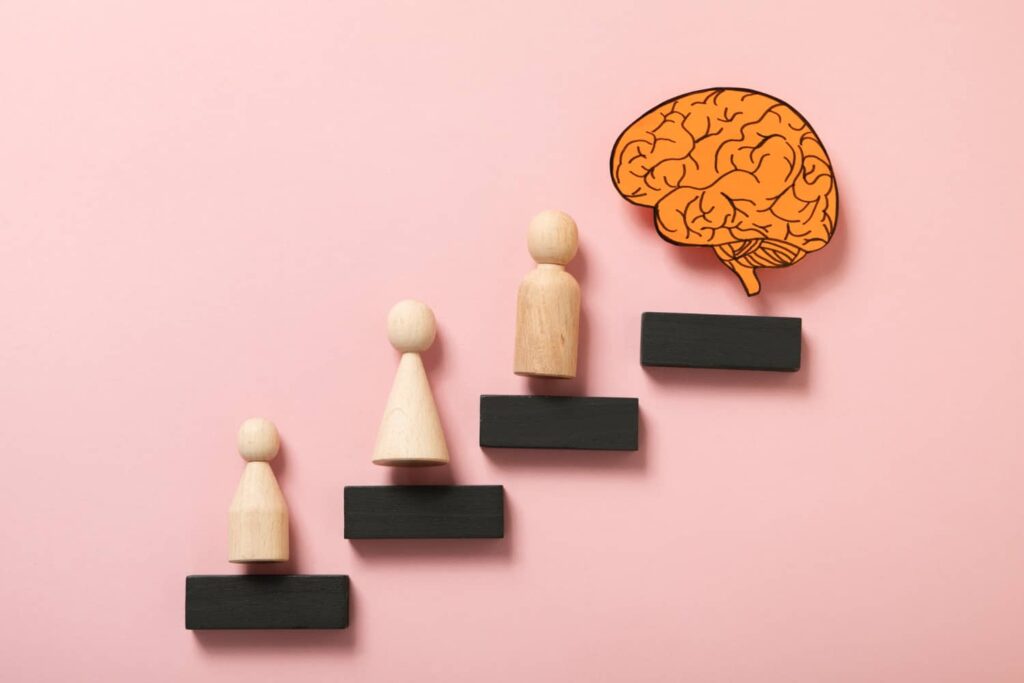Introduction
The value of a fantastic customer experience cannot be overstated in the age of technology, where brand options are numerous, and attention spans are short. A customer’s loyalty to a brand can be made or broken by each and every encounter, touchpoint, and moment they have with it.
Have you ever thought about what makes an experience genuinely unforgettable, though? Our minds hold the key to the solution. These life-changing experiences are greatly influenced by neuroscience, the study of the nervous system and the brain.
The Neuroscience of Customer Experience

How the Human Brain Processes Experiences
Our brain is a complex organ, constantly processing a myriad of information. When we encounter a brand or a product, several areas of our brain get activated:
- The Prefrontal Cortex: Responsible for decision-making, this area evaluates the pros and cons of a product or service.
- The Amygdala: This is our emotional center. It determines whether an experience evokes positive or negative emotions.
- The Hippocampus: Central to memory formation, it decides if an experience is worth remembering.
The Connection Between Emotions and Memory
Emotions play a crucial role in determining how we remember experiences. Studies have shown:
- Positive emotions, like joy or surprise, make experiences more memorable.
- Negative emotions, while impactful, can lead to brand aversion if not addressed promptly.
- Neutral experiences often fade away, as they don’t elicit strong emotional responses.
Strong positive emotions should be the main goal for brands looking to leave a lasting impression. These feelings serve as anchors for experiences in our memories, whether it be the excitement of opening a new product, the surprise of an unanticipated discount, or the friendliness of outstanding customer service.
The Power of Brand Interaction
Leveraging Neuroscience for Impactful Interactions
Brands that understand the complexity of the human brain can design interactions that have a profound emotional impact on their audience. Brands can design experiences that are not just entertaining but also memorable by focusing on the parts of the brain associated with emotion, judgment, and memory. Here’s how:
- Personalization: Tailoring experiences based on individual preferences engages the prefrontal cortex, making customers feel understood and valued.
- Storytelling: Sharing compelling brand stories can evoke emotions, engaging the amygdala and making the brand more relatable.
- Consistency: Ensuring a consistent brand experience across all touchpoints reinforces positive memories in the hippocampus.
Real-World Examples
- Apple: Their product launches are more than just announcements; they’re events that tell a story, evoking excitement and anticipation.
- Nike: Through consistent messaging and personalized marketing, Nike creates a sense of belonging, making customers feel like they’re part of a larger community.
Psychological Triggers in Marketing

Key Triggers Influencing Purchasing Decisions
Understanding and leveraging psychological triggers can significantly enhance marketing strategies. Some of the most impactful triggers include:
- Reciprocity: People feel obliged to return a favor. Offering free samples or valuable content can make customers more inclined to make a purchase.
- Social Proof: Seeing others endorse a product or service can validate a potential customer’s decision to buy.
- Scarcity: Limited-time offers or limited-stock items create a sense of urgency, prompting quicker purchasing decisions.
- Authority: Endorsements from experts or celebrities can boost a product’s credibility.
Implementing Triggers in Marketing Strategies
- Testimonials & Reviews: Showcase real customer feedback to provide social proof.
- Limited-Time Promotions: Create urgency by offering discounts for a short period.
- Collaborations: Partner with influencers or experts in your industry to enhance your brand’s authority.
Crafting Memorable Moments
The Importance of ‘Peak’ Moments
Moments that stand out and are frequently referred to as “peak” moments occur during a customer’s relationship with a company. Whether because of their emotional effect, unexpectedness, or sheer delight, these are the kinds of experiences that stick with you. In a congested market, brands that can spot and capitalize on these opportunities stand out.
Strategies for Creating Memorable Moments
- Surprise and Delight: Go beyond expectations by offering unexpected rewards or gestures. This could be a surprise discount, a handwritten thank-you note, or a small gift with purchase.
- Engage Emotionally: Connect with customers on a personal level. Celebrate their milestones, whether it’s a birthday, an anniversary with the brand, or another significant event.
- Exclusivity: Offer exclusive experiences or products to loyal customers, making them feel valued and special.
The Role of Technology in Enhancing Customer Experience
Modern Tools for a Modern Age
With technological improvements, organizations now have a wide range of tools at their disposal to comprehend and improve the client experience. With these technologies, organizations may gain insights into their customers’ behavior, preferences, and pain areas and adjust their marketing tactics accordingly.
Technologies Making a Difference
- Artificial Intelligence (AI): AI can analyze vast amounts of data to predict customer behavior, personalize marketing campaigns, and offer real-time assistance through chatbots.
- Virtual Reality (VR) & Augmented Reality (AR): These technologies offer immersive experiences, allowing customers to try products virtually or enhance their physical environment with digital information.
- Data Analytics: By analyzing customer data, brands can identify trends, preferences, and areas of improvement, ensuring a more tailored and efficient customer experience.
Conclusion
Understanding the science behind memorable experiences is essential in the dynamic world of brand-customer interactions. Brands can create interactions that resonate, engage, and leave a lasting impact by delving deeply into the fields of neuroscience and psychology.
The instruments at our disposal to improve these experiences are only getting more numerous as technology develops.
The message to CMOs and senior marketing executives is clear: make an investment in human brain research, take advantage of psychological cues, and maximize the potential of contemporary technology to raise your brand’s customer experience to unrivaled heights.
Further Reading & Resources
For those keen on diving deeper into the fascinating world of customer experience, neuroscience, and technology, here are some recommended reads and resources:
- Books:
- “The Power of Moments” by Chip Heath & Dan Heath: A deep dive into why certain experiences have an extraordinary impact.
- “Hooked: How to Build Habit-Forming Products” by Nir Eyal: Understand the psychology behind habit-forming products.
- Articles:
- “The Truth About Customer Experience” published in Harvard Business Review: An insightful piece on how brands can leverage neuroscience.
- Predictive Analytics: Future-Proofing Your Marketing Strategy
- An In-depth Look at Influencer Marketing
- Strategic Planning Frameworks for Modern Marketers
- Mastering Website Storytelling for Impactful Web Design
- Studies:
- “The Emotional Brain: The Mysterious Underpinnings of Emotional Life” by Joseph E. LeDoux: A comprehensive study on the role of emotions in our decision-making processes.
- “The Role of Technology in Enhancing Customer Experience” by MIT Technology Review: An exploration of how technology is shaping the future of customer interactions.
Frequently Asked Questions (FAQs)
Neuroscience studies the workings of the brain and nervous system. By understanding how the brain processes experiences and emotions, brands can craft interactions that resonate more deeply with customers.
Psychological triggers are factors that influence a person’s behavior or decision-making process. In marketing, these can include elements like reciprocity, social proof, scarcity, and authority, which can be leveraged to drive consumer actions.
You’ve likely encountered psychological triggers in many brand campaigns without even realizing it. For instance, when a store offers a “Buy One, Get One Free” promotion, they leverage the reciprocity trigger. When you see a countdown timer on a limited-time sale on an e-commerce site, that’s the scarcity trigger in action. Celebrity endorsements in advertisements utilize the authority trigger, while product reviews and website testimonials tap into the social proof trigger. These tactics are designed to influence your purchasing decisions subtly.
Modern technologies like AI, VR, and AR, along with data analytics, offer brands tools to personalize experiences, predict customer behavior, and provide immersive interactions, leading to a more tailored and memorable customer journey.
‘Peak’ moments are experiences that leave a lasting impression on a customer. By identifying and amplifying these moments, brands can create memorable interactions that foster loyalty and positive brand associations.
Elevate Your Online Presence with ‘Get SmartWebsite’
Crafting stunning, user-friendly WordPress websites is our forte. From design to maintenance, our team ensures your site stands out and performs flawlessly. Interested in learning more? Explore our Website Design & Development Services. Partner with ‘Get SmartWebsite’ and let’s bring your digital vision to life.
